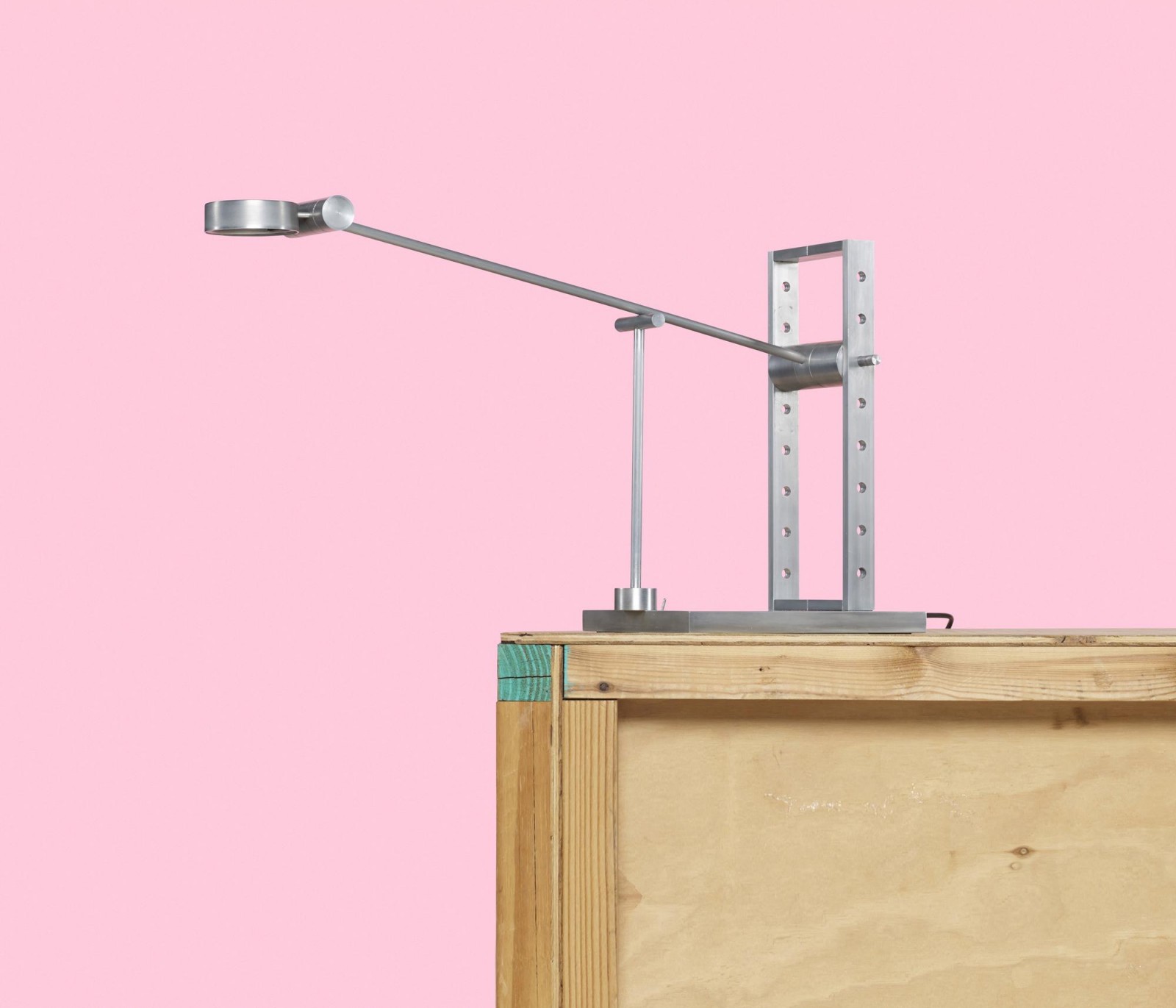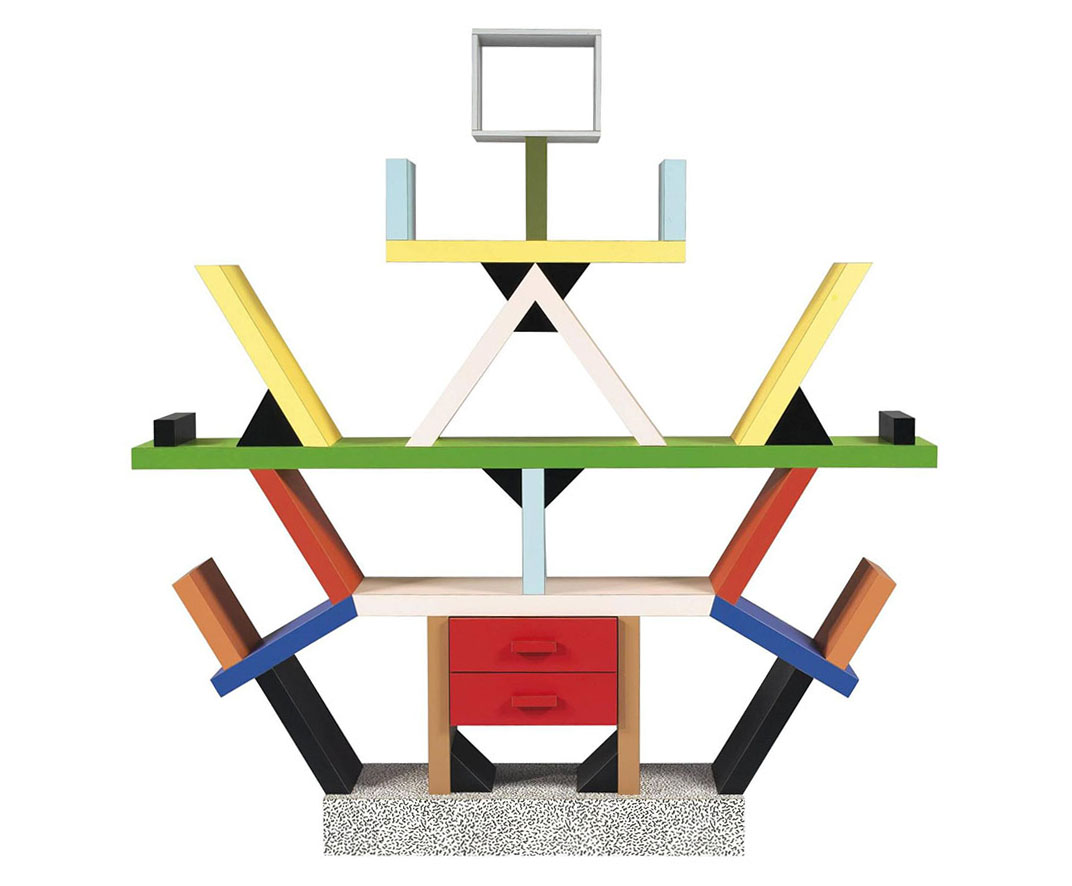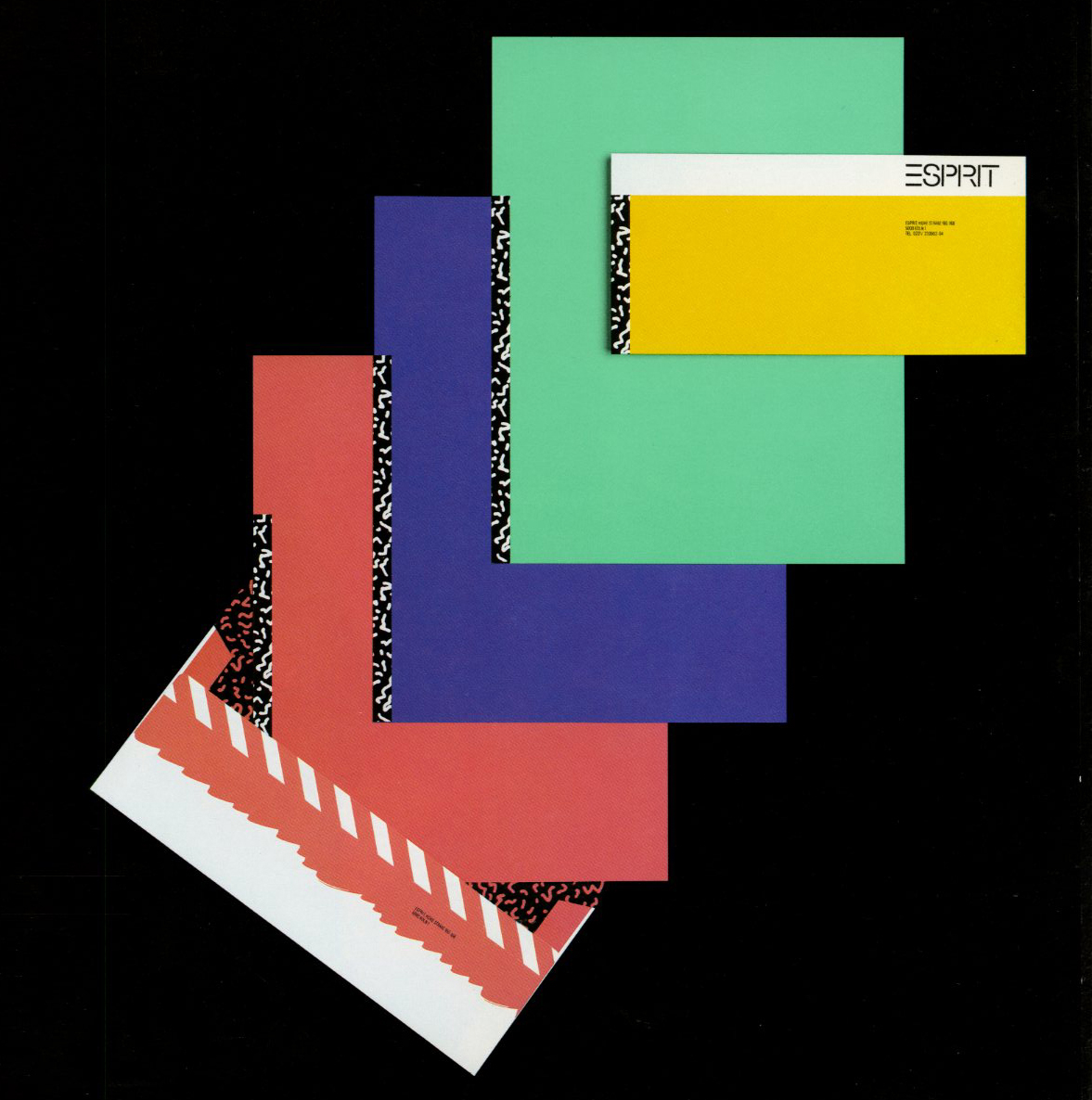
02.18.15
From the Library Of
Esprit’s Brand Books
There are some books that are quoted, referenced, or photographed so often in our line of work that they begin to feel like touchstones for design-world enthusiasts all over the world. The Nathalie du Pasquier–illustrated Leonard Koren bible Arranging Things: A Rhetoric of Object Placement is of those such books; the late-’90s graphic-design manifesto Tibor Kalman: Perverse Optimist is another. But recently, another book has begun popping up no matter where we look. Esprit: The Comprehensive Design Principle — a huge, softcover paean to every design aspect of the beloved 1980s fashion brand — was published in 1989 by its founder Douglas Tompkins, but has experienced a resurgence of late in these ’80s nostalgia–tinged, Memphis revival–happy times.
We first came across the book — along with its accompanying volumes, Esprit’s Graphic Work, 1984-1986, and Esprit: The Making of an Image — when we were visiting our friend Evan Orensten, the Cool Hunting co-founder and editor who once upon a time worked as a spokesperson for Esprit. We borrowed the books (for longer than one ought to borrow books from a friend) and couldn’t stop obsessing over them. It’s not just that Esprit’s design work was so good, or so effortlessly cool, or so beloved by so many people. (Shiro Kuramata described it, amazingly, like this: “Like a fish in the right water, Esprit’s total design is freespirited, open minded and it shines like thick vapors in the sky.”) It’s that, as the book’s title suggests, it was so utterly comprehensive. We can’t remember another brand in history that gave such thought and intention to every aspect of the design process. The book chronicles it all — our favorite being the showroom and headquarters interiors by big-name architects like Norman Foster, Antonio Citterio, Ettore Sottsass, and Kuramata himself — and bears out how the “architecture was used as a point of departure for supporting graphic materials. In this way, all printed items helped to reinforce the design character set forth in the architecture. Everything from business cards to store signage, employee I.D. cards and cash register receipts were related graphically to each individual store environment.” We’ve excerpted some of our favorite images from the book below, but if you can get your hands on one of the highly sought-after, out-of-date volumes, we seriously recommend it. Happy hunting!
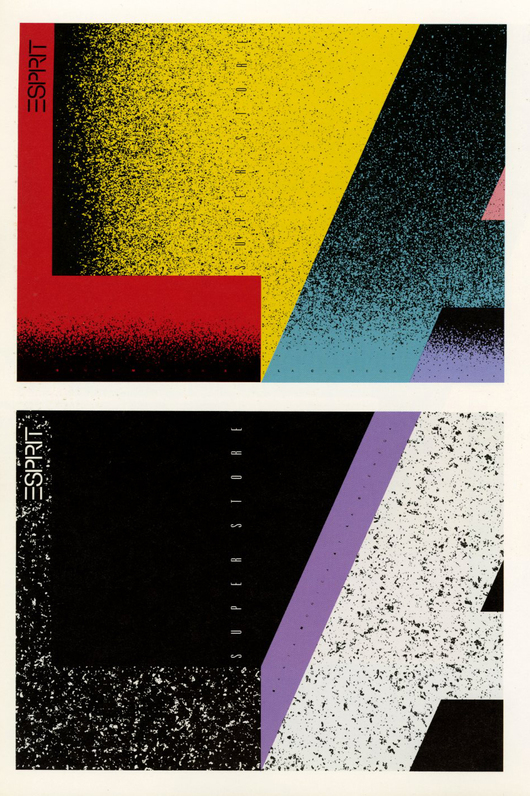
LA Superstore Advertising, 1986-1987
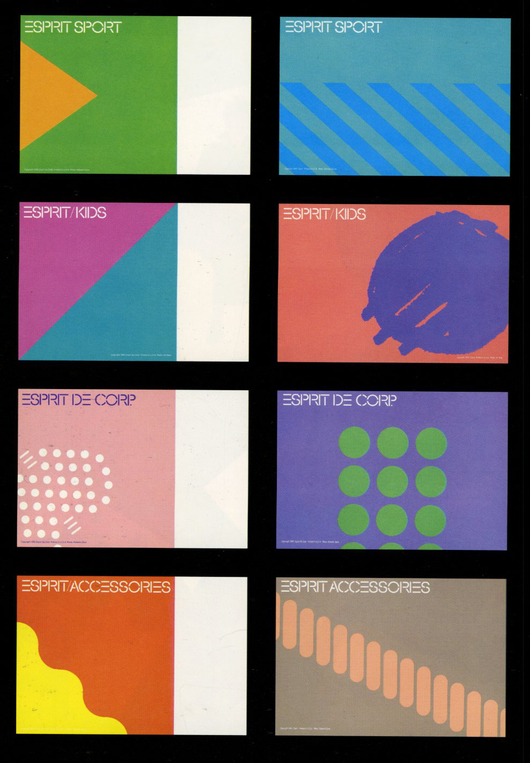
Postcards, 1984-1986
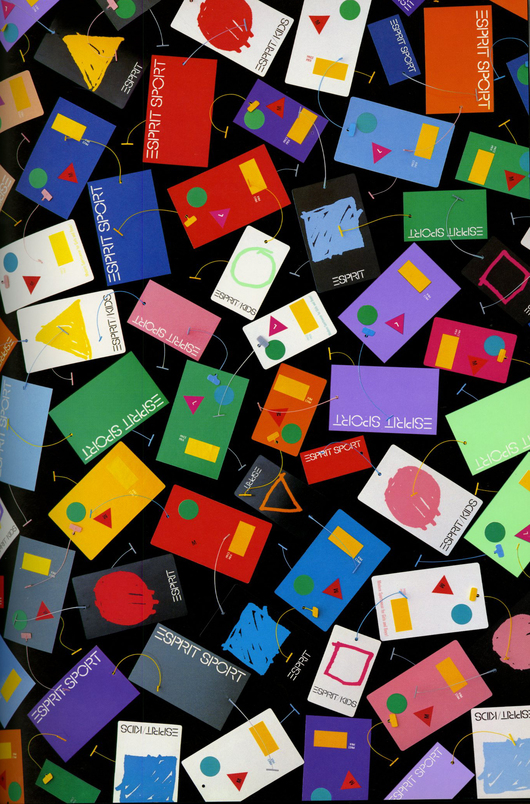
Hangtags, 1984-1987
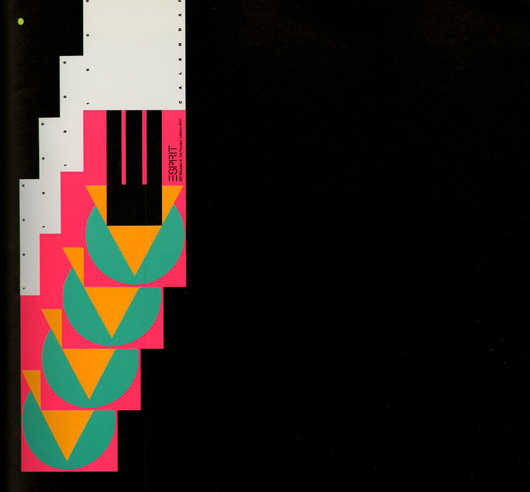
Esprit Mailing Label, Spring 1986
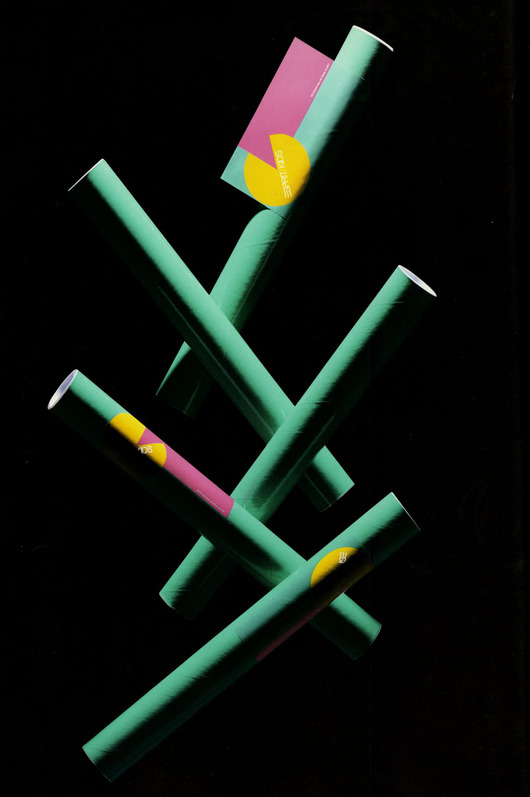
Poster tube for a Kids Promotion, 1985
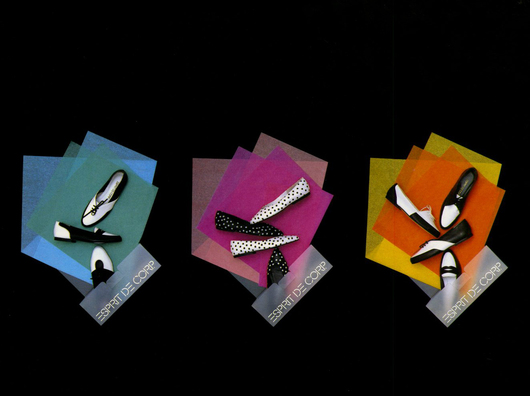
Shoe Box Display, 1986
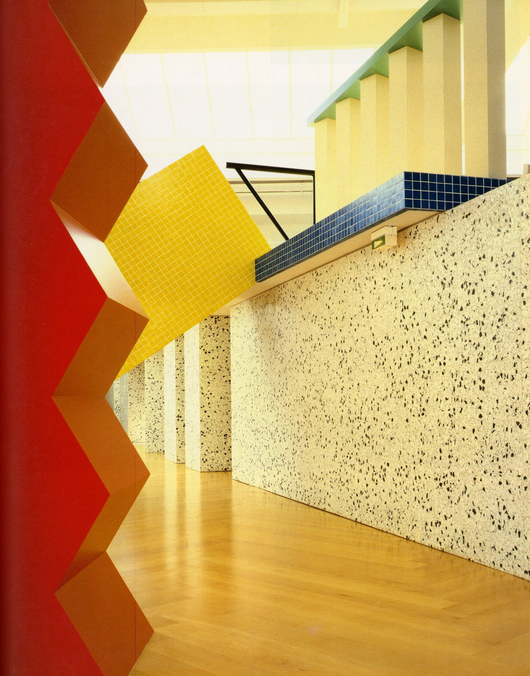
A corridor in the main showroom of the Dusseldorf headquarters, designed by Ettore Sottsass, Aldo Cibic and Beppe Caturegli of Sottsass Associati. Completed 1986.
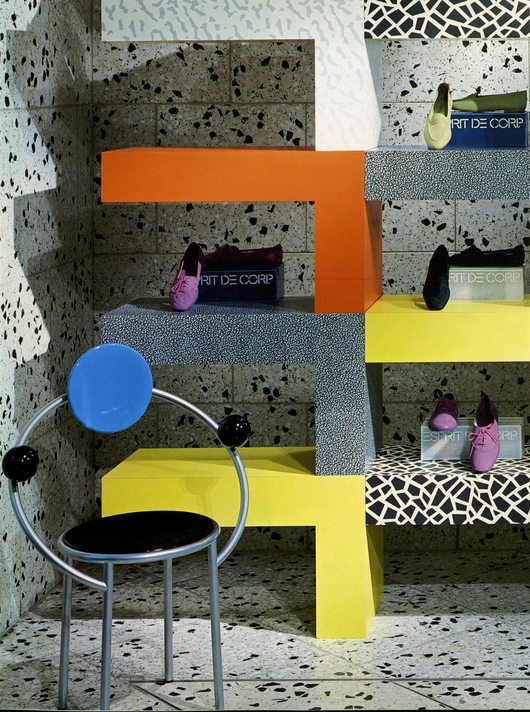
Shoe display designed by Aldo Cibic for the Cologne store
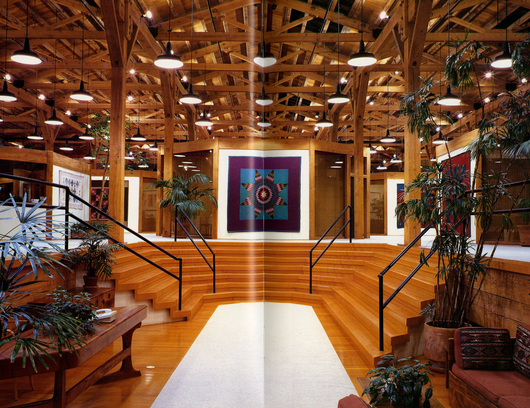
San Francisco headquarters at 900 Minnesota Street. Completed 1976-1989.
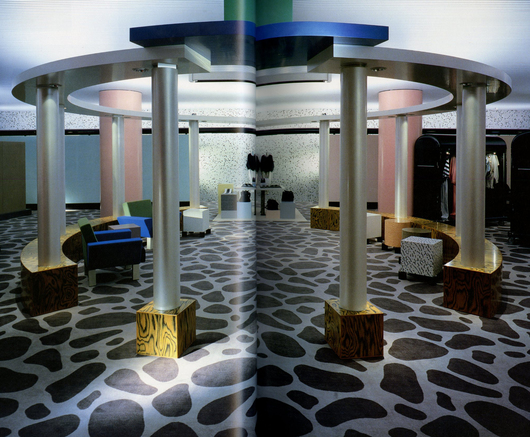
Showroom and headquarters in Zurich, Switzerland, designed by Ettore Sottsass and Aldo Cibic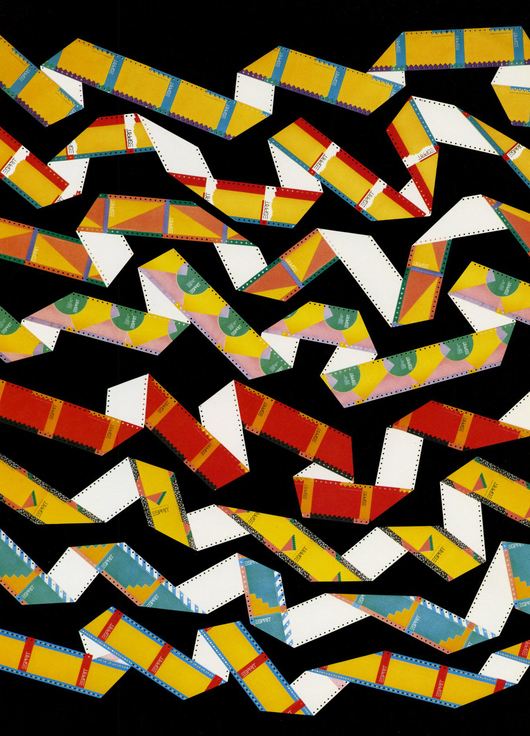
Cash Register Receipts, 1984-1988
“The cash receipts are one element in the total package presentation. Cash register receipts were first considered important when the Los Angeles store’s graphic image was being developed and then later receipts were designed for the San Francisco Outlet store (above). Gradually they became an important detail in the overall graphic presentation for all the stores worldwide.”
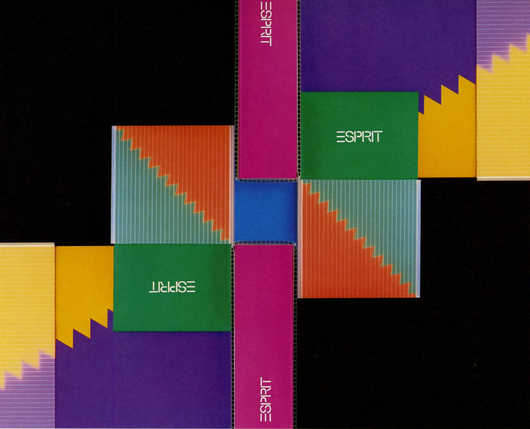
Gift Boxes, 1986
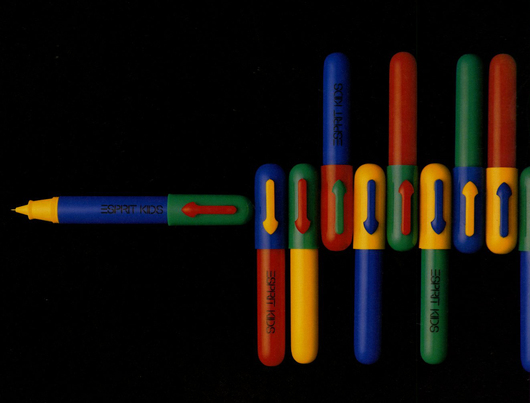
Kids Promotions, 1986
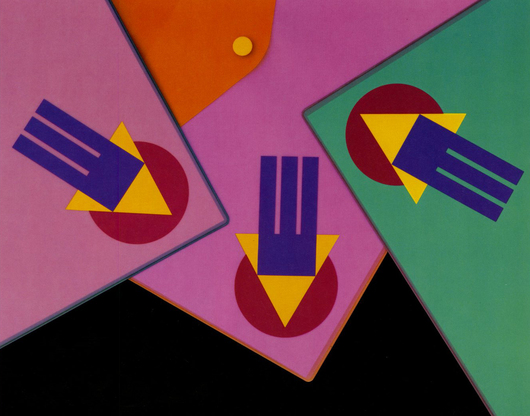
Portfolio Cases, 1987
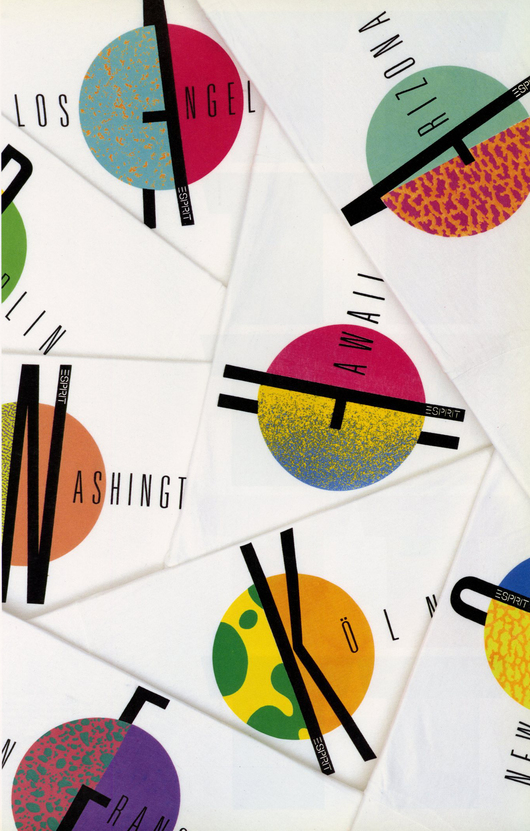
Details of the first city T-shirt series
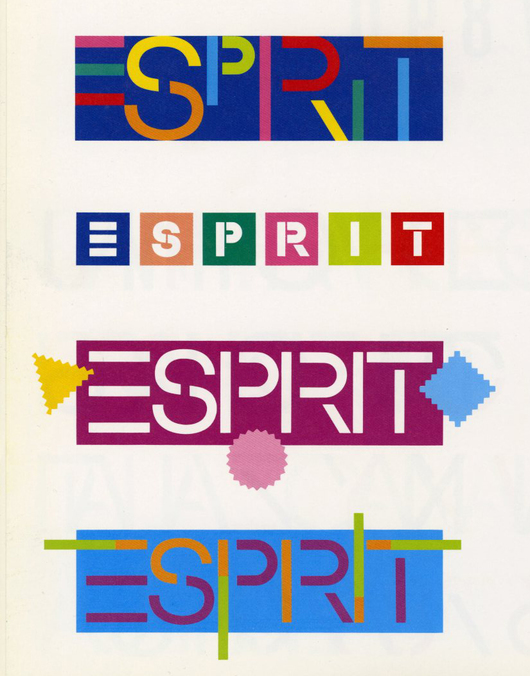
Logotype Design Applications, 1984-1988
“Excessive modification of the logotype was avoided to keep the image simple and in character with the original design. Geometric shapes — circles, triangles or squares were natural embellishments.”
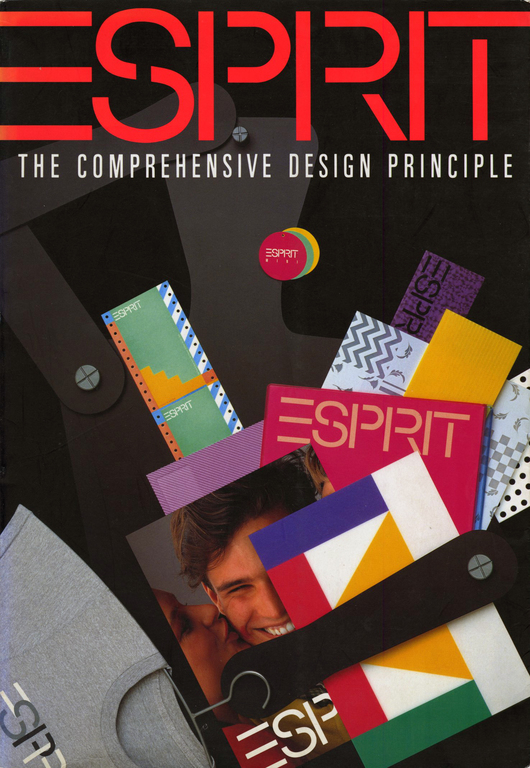
Book jacket design

